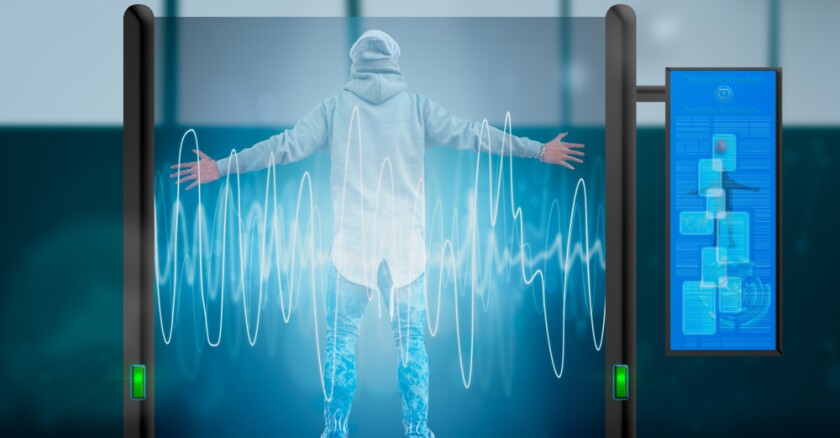Upper Darby's high school and middle schools began using the weapons detection systems, made by Evolv, for their 6,000 students this week. The Delaware County district in September moved to add the security measures after a loaded gun and an AR-style magazine were discovered at the high school in the first weeks of the school year.
On Wednesday, the first day the system was used, a high school student was caught with brass knuckles and a knife, said Superintendent Dan McGarry. The systems, which use artificial intelligence, are not actually designed to identify knives, but McGarry was glad they had done so.
"We're looking for guns," he said.
Metal detectors and other weapons detection systems have been controversial in some school communities, with critics accusing schools of criminalizing children. There have also been concerns about effectiveness: After a student stabbed two staffers at Philadelphia's Castor Gardens Middle School last month, district officials said the school's weapons detection system, made by OpenGate, did not detect most knives.
In Upper Darby, school leaders had predicted some logistical issues with adopting the new systems — particularly at the high school, where more than 4,000 students and staff have to pass through the detectors daily. But on Thursday — the second day of the new process — officials said it was already running more smoothly than expected.
The district dropped its requirement for checking student IDs to accommodate the new detection systems; managing both would have required the district to add more than 30 staffers, an impossible task midyear, McGarry said. Because of that, some students waiting in line Thursday said it now took less time to get into school than before.
While it took 30 minutes to get everyone through the high school Wednesday, that was cut to 15 minutes by Thursday, said Kelley Simone, the district's director of secondary education, who called the progress "amazing."
There were also far fewer searches conducted Thursday, as administrators credited students with quickly learning which items they needed to remove from their backpacks before passing through the systems. The most common were binders, laptops, umbrellas, and eyeglass cases, but other items that set off detectors this week included a makeup compact and a cluster of pipe cleaners for a student art project, Simone said.
Students who trigger the alarm have a chance to pull out items from their backpack and pass through the system again; if it still goes off, they're directed to a separate area for a backpack search.
"He's gotta come," one staff member at the high school called out Thursday morning, as a boy wearing a sweatshirt set off the detector despite removing a Chromebook from his backpack. With a sheepish expression, the student was ushered into the performing arts center, where about 15 students sat in auditorium chairs, spread out across rows, waiting for staff to check their bags.
McGarry — who said that no weapons were discovered Thursday — asked the students in the auditorium if they felt safer. One girl shook her head no, while a boy made a so-so hand gesture. But some acknowledged they preferred the new system to the ID checks, which were slowed down by students who forgot their IDs, McGarry said.
In addition to the knife and brass knuckles found Wednesday, school leaders found a vape pen on Thursday. Craig Parkinson, the high school principal, said "the vibe, the feeling in the building" was positive. "Students and staff like it," Parkinson said, noting that the added security measures had long been sought by some community members.
The systems — which an Evolv spokesperson said are used in 10 Pennsylvania school districts — will cost the district more than $1 million over four years, mostly in the first year. McGarry acknowledged that the systems will not catch everything.
"If somebody wants to cause harm," they will still try to find a way, McGarry said. Still, he said, compared with the disruption caused by gun threats earlier this year, "it's a much less stressful situation."
©2024 The Philadelphia Inquirer. Distributed by Tribune Content Agency, LLC.









